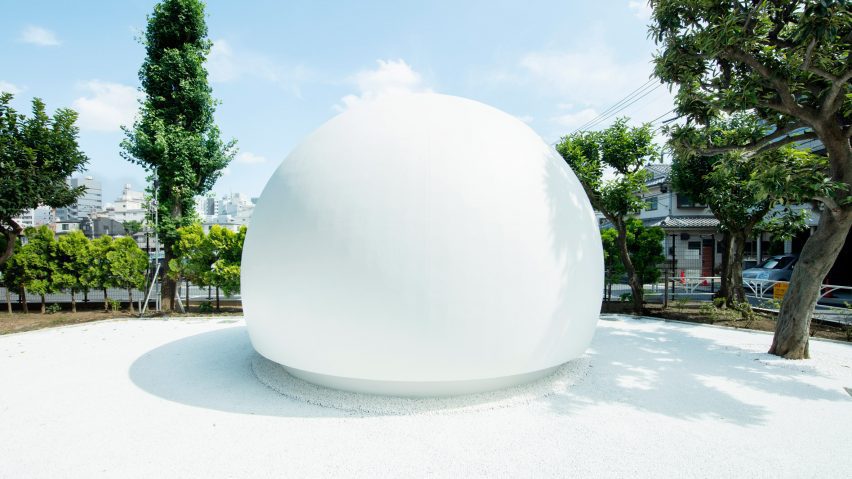
Ten inventive toilet designs that rethink the conventional loo
Following the news that designer Archie Read has developed a toilet that uses a conveyor belt rather than water to dispose of waste, here is a roundup of 10 innovative loos including a prototype that combusts excrement into ashes and a lavatory for Mars.
In recent years, designers have come up with numerous ideas for toilets as part of the global effort to provide safe, hygienic and effective sanitation in regions from India to Mars.
These innovations include developing alternatives to water or electricity-powered toilets, as well as creating more accessible alternatives to traditional waste disposal techniques. Many respond to the fact that the World Health Organization estimates around 2.8 billion people globally are forced to use unsafe sanitation facilities.
While some of the below are already in use in specific locations, many are still concepts designed for use in future societies.
Here are 10 inventive toilet designs from the Dezeen archive:
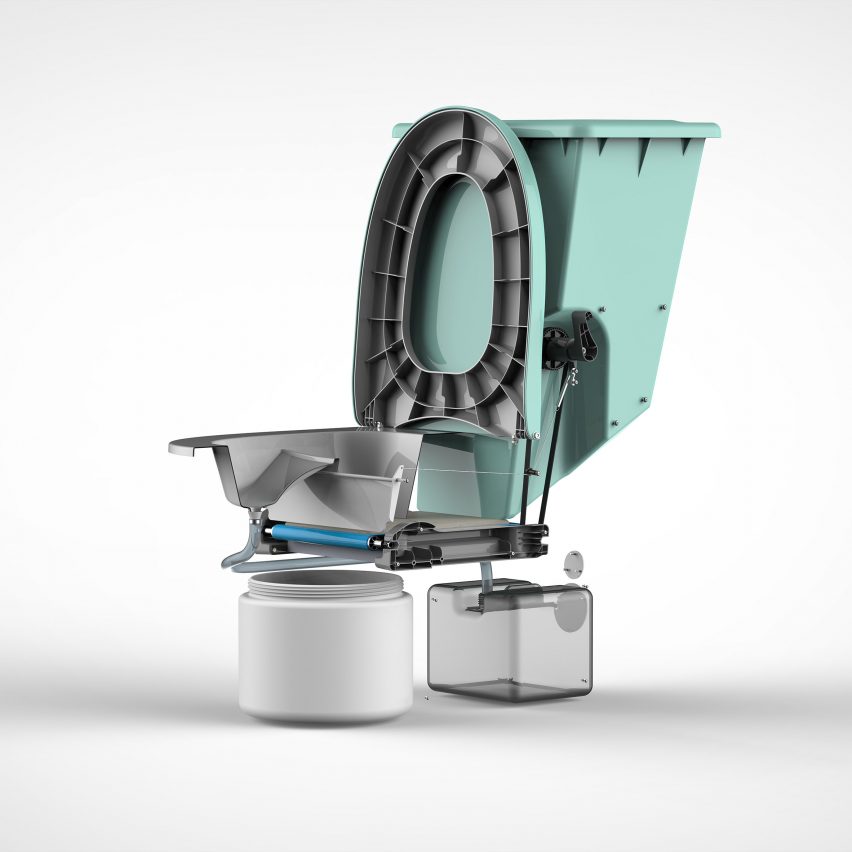
Brunel University graduate Archie Read invented a waterless toilet called Sandi, designed for rural, sub-Saharan Africa locations where many people are living without safe sanitation.
Users fill the toilet's tank with sand or a similarly dry and powered material such as sawdust to stop faeces from sticking to the belt. After using, the toilet is "flushed" with a lever that activates the belt to carry the waste to a bin underneath which is sealed off by a sprung-hatch door.
Find out more about Sandi Toilet ›
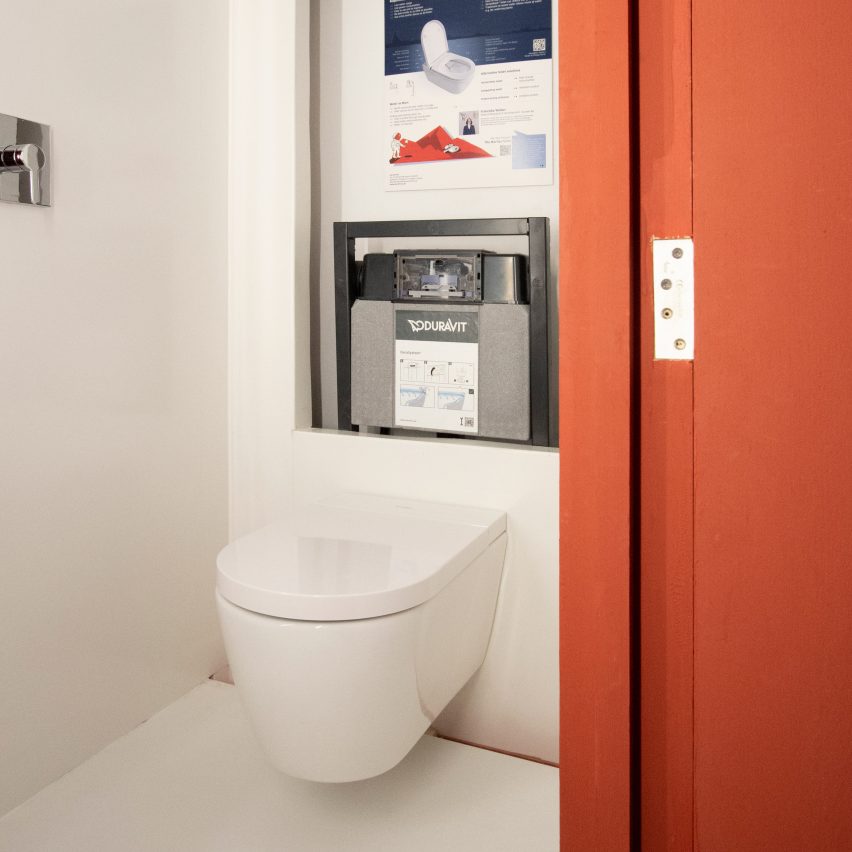
Bathroom company Duravit developed a futuristic toilet for use in future homes on Mars, which the company claimed would be comfortable for people living on the planet for long periods of time.
The latrine, which resembles current toilets used on Earth, is designed to use small amounts of water, while odour would be extracted as it will be impossible to open windows.
Find out more about Martian Toilet ›
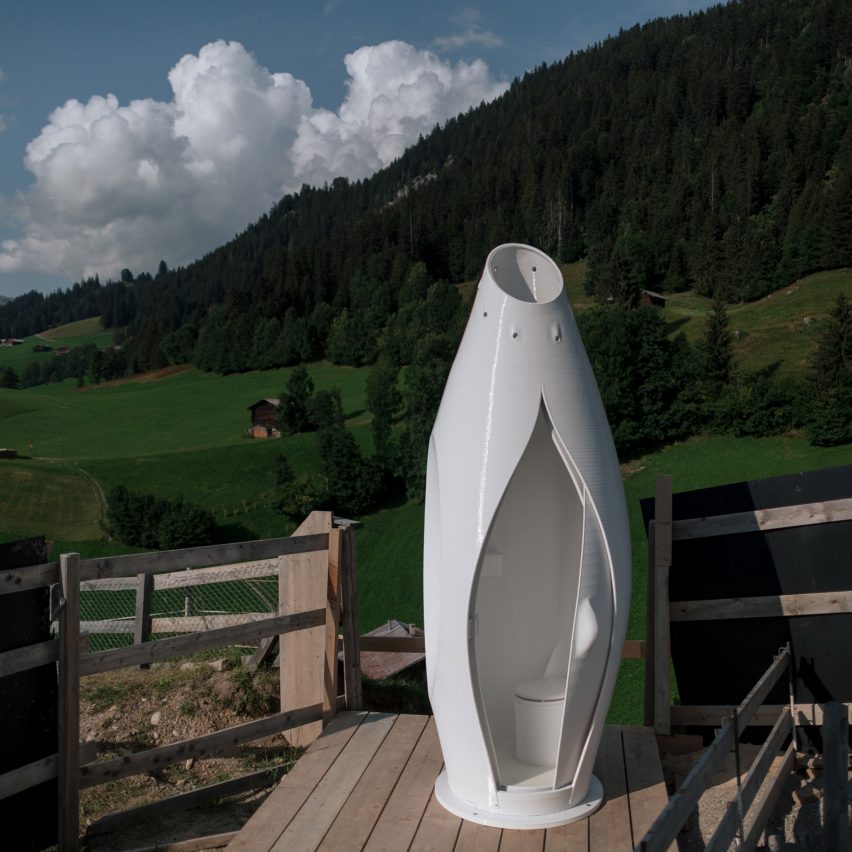
The Throne, a collaboration between Spanish studio Nagami and the To.org foundation, is made from discarded medical equipment that has been 3D-printed to produce a toilet cubicle.
The portable toilet is comprised of three parts – a pear-shaped body, a double-curved sliding door and a bucket for collecting solid waste which can then be composted and used as fertiliser.
Find out more about The Throne ›
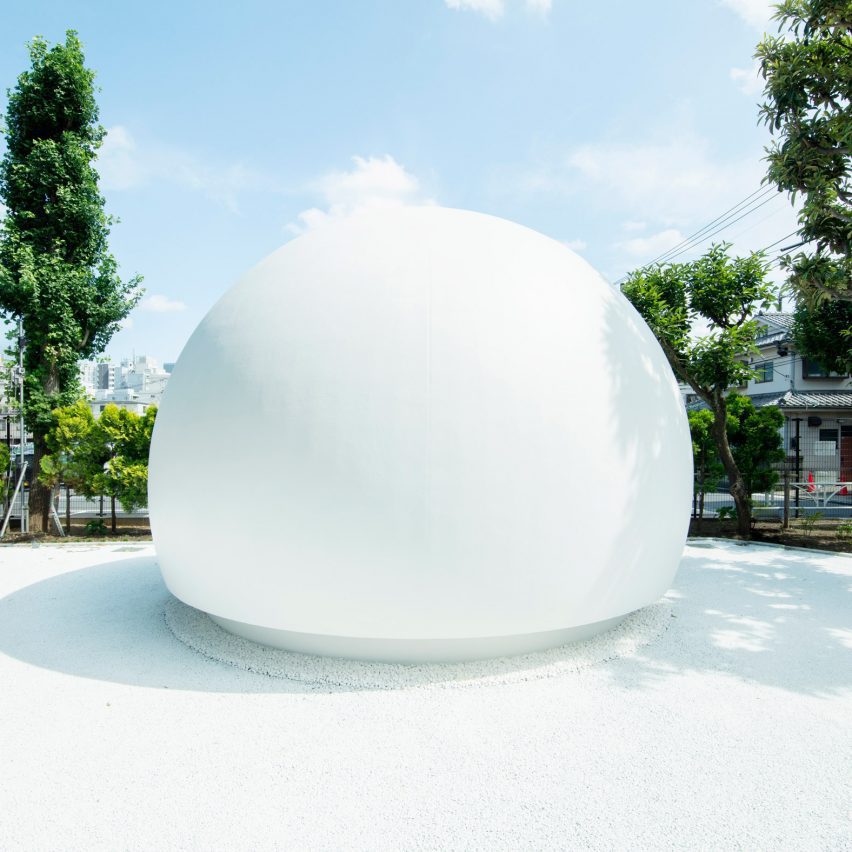
Visitors who need to relieve themselves while walking through Nanago Dori Park in Tokyo can do so in Hi Toilet, a public bathroom that uses voice commands to control functions including the door, toilet flush, taps and play ambient music.
Designer Kazoo Sato designed the toilet to counteract perceptions of public toilets as being badly lit, dirty, stinky and scary.
Find out more about Hi Toilet ›
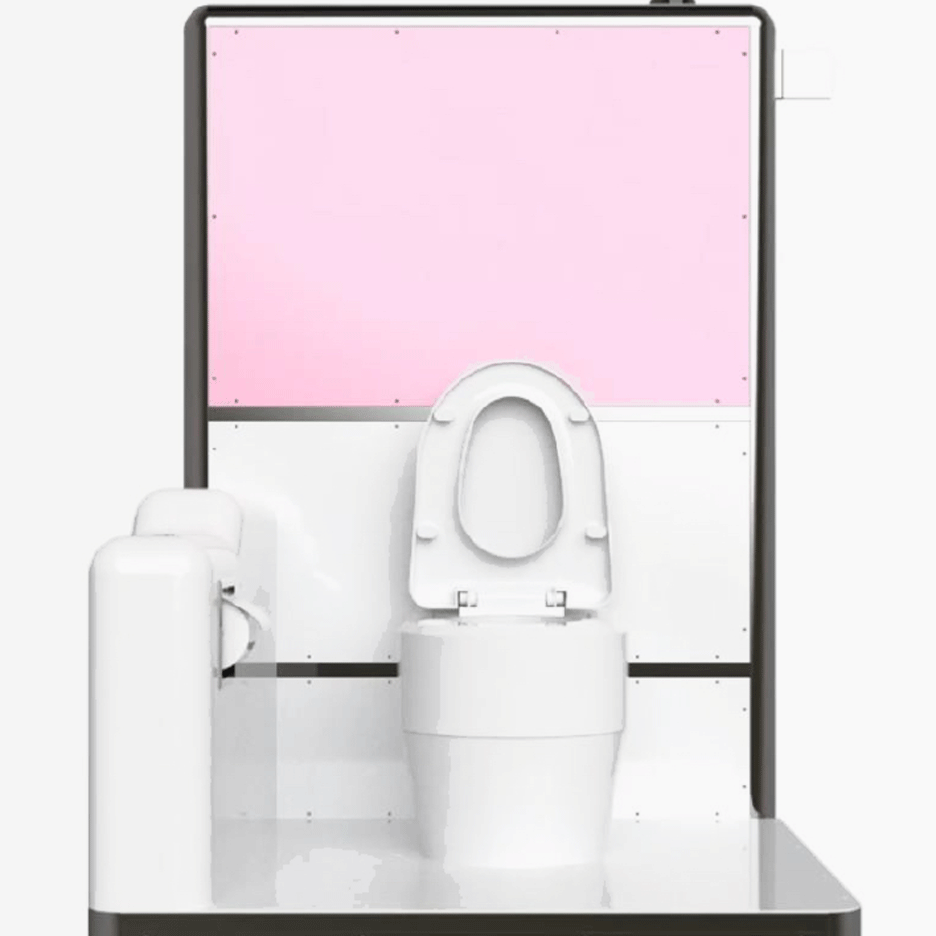
Reinvent the Toilet Challenge Toilet by Bill Gates and Samsung
This prototype by Samsung was developed as part of Bill & Melinda Gates Foundation's Reinvent the Toilet Challenge. The toilet would use heat-treatment and bioprocessing technologies to dry solid waste and combust it into ashes as well as kill the harmful pathogens found in human waste.
"There have been other advancements – waste treatment plants and underground sewers – but these complicated, expensive, and hard-to-manage technologies don't do much good in developing countries where 950 million people still have to defecate outdoors," said the Bill and Melinda Gates Foundation.
Find out more about Reinvent the Toilet Challenge Toilet ›

Lapee, by Gina Périer and Alexander Egebjerg
Launched at the Danish music festival Roskilde Festival, Lapee is a urinal made from industrial-strength plastic that provides up to three people with a place to pee outdoors.
Developed in a bid to improve gender equality and shorten queuing times – an issue that targets those who need to sit down to pee in particular – the bright pink loo is screened by the curving form of the unit walls, which are low enough so that users can see over without people being able to look in.
Designers Gina Périer and Alexander Egebjerg hoped that Lapees could also be used in disaster recovery situations or refugee camps, where women are often left vulnerable when going to the bathroom.
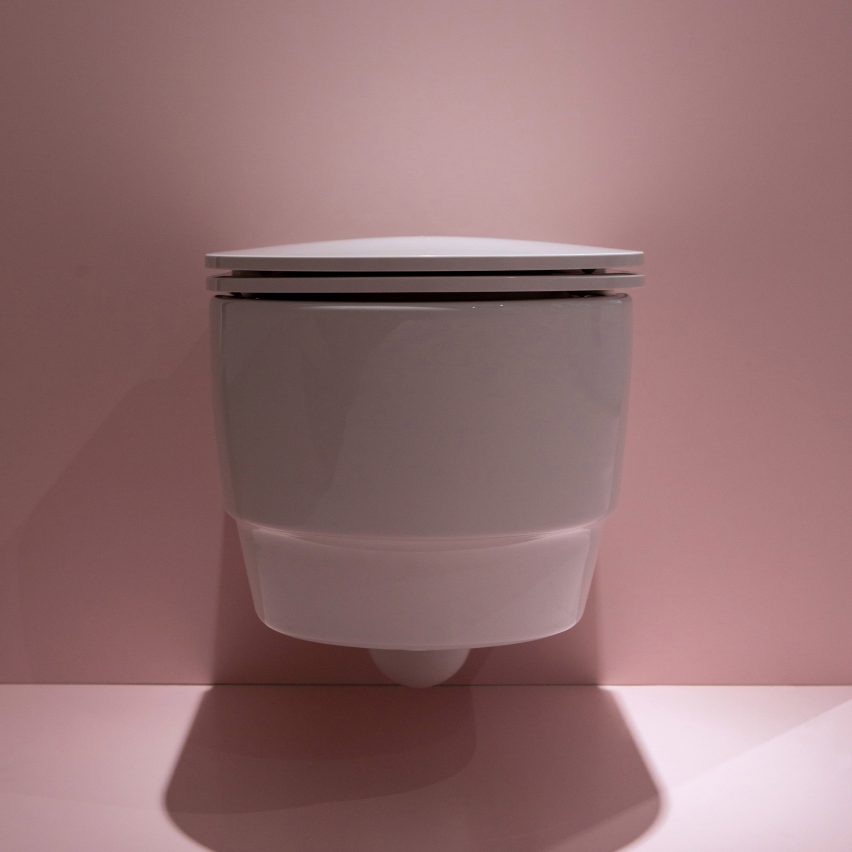
Save! Separation Toilet by Laufen and EOOS
Austrian design firm EOOS and the Swiss Federal Institute of Aquatic Science and Technology (EAWAG) teamed up to create a toilet for bathroom company Laufen that aims to tackle the harmful pollution caused by wastewater, an environmental problem that still plagues many regions around the world.
The Save! Separation Toilet comes with a trap to siphon off urine – which contains a high number of nutrients – that can then be turned into fertiliser, helping to reduce the negative impact of human waste on the planet.
"Wastewater management is vital if we are to prevent catastrophic damage to the world's rivers and oceans," said Tove Larsen from EAWAG's Department for Urban Water Management.
Find out more about Save! Separation Toilet ›
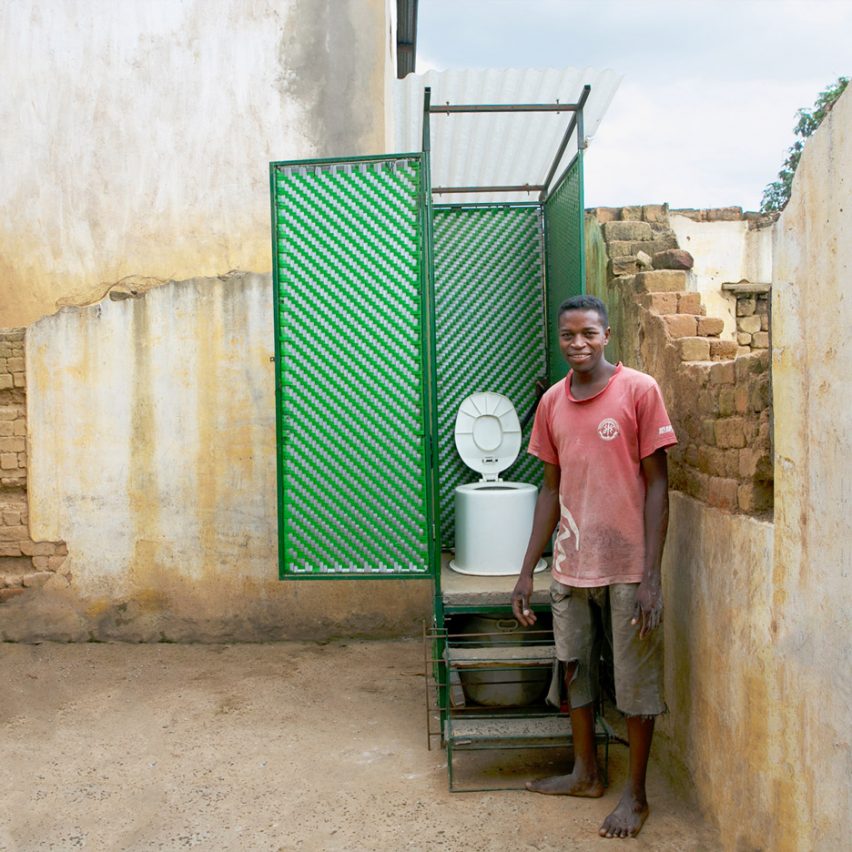
The LooWatt may not look futuristic, but its inventor Virginia Gardiner argues it could revolutionise sanitation, especially for those living in extreme poverty.
It can be flushed without using any water, safely disposing of human waste which can then be captured in a biodegradable polymer film and taken to an anaerobic digester where it is turned into electricity.
"We believe that to make a new solution for sanitation in the 21st century, you need to have the experience on a par with a flush toilet in terms of hygiene and no odour," said Gardiner.
Find out more about Waterless Toilet ›

Architecture studio Spark devised a concept for a portable 3D-printed toilet that reimagines how people with few resources can access electricity. It works by transforming human waste gathered from the toilet into fuel to be used in a micro-combined heat and power unit.
The concept was created for use in India, but the studio claims that if put into widespread production the design could tackle the severe hygiene and sanitation issues associated with open defecation globally.
Find out more about Big Arse ›
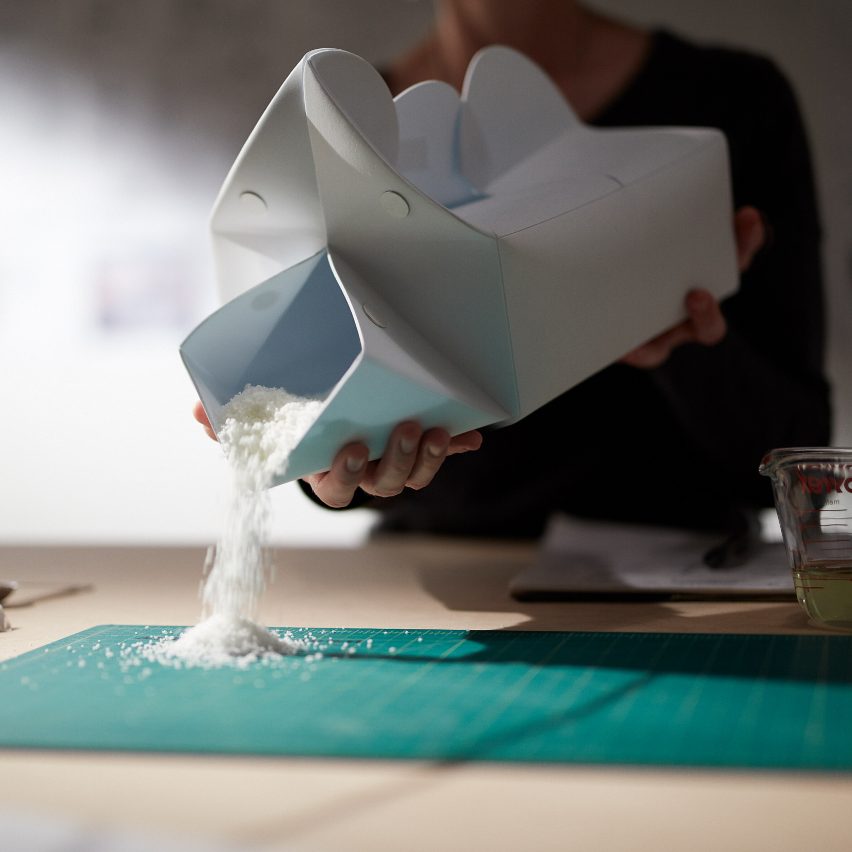
Although waste disposal device Night Loo is made from simple materials, designer Anna Meddaugh believes that it could help create a future in which women and girls in refugee camps no longer have to feel scared to use toilets at night.
After urinating into the silicone container, the user pours in a sachet of super-absorbent polymer known as Instant Snow which soaks up the liquid and quickly turns it into to dry powder, getting rid of any odour in the process.
Find out more about Night Loo ›
Dezeen is on WeChat!
Click here to read the Chinese version of this article on Dezeen's official WeChat account, where we publish daily architecture and design news and projects in Simplified Chinese.